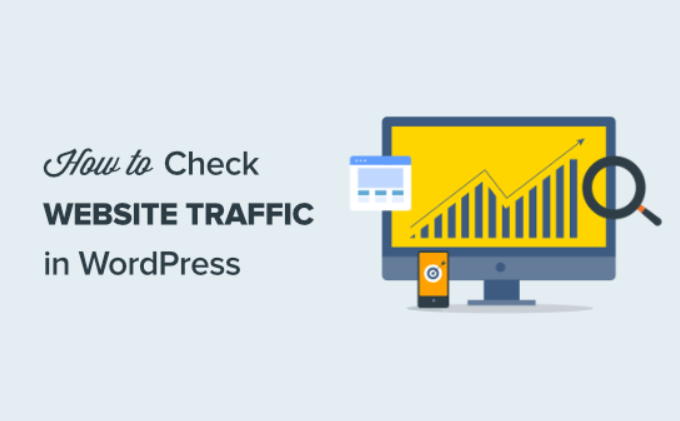How to Do a Competitor Analysis for SEO of SaaS Platform?
In the cutthroat digital arena, securing a top spot in search results is crucial. With numerous websites fighting for those coveted positions, a beautiful website alone won’t cut it—you need a strategic SEO plan that surpasses your rivals.
However, the challenge lies in understanding why competitors outrank you. You might be creating fantastic content and building backlinks, but without knowing their secret sauce, you’re navigating SEO blindly. This can lead to wasted efforts, missed opportunities, and ultimately, lower rankings and less traffic.
This is where competitor identification steps in. By systematically studying your competitors’ SEO strategies, you can uncover the tactics giving them the edge and use this knowledge to refine your own approach. But how to do a competitor analysis for SEO? This SEO guide will walk you through conducting an effective market analysis, empowering you to identify opportunities, optimize your strategy, and climb the search rankings.
Identifying Your SEO Competitors
Knowing your true SEO competitors is key to a winning optimization strategy. These aren’t always your traditional business rivals, but websites ranking for the same keywords, vying for your audience in organic search. Accurately identifying them allows you to analyze their strategies and find ways to improve your own search performance.
According to Ahref Nearly 91% of websites don’t get any visitors from Google searches. This is mostly because those websites aren’t optimized for search engines, and they haven’t studied their competition to see what works.

Techniques for Finding Competitors
- Start by identifying key terms related to your business. Search these terms, do traffic analysis and note the top-ranking sites.
- Ask your customers which other websites they use for similar products or information.
- Research your industry to understand the broader competitive landscape. Look for new trends and entrants that might impact your SEO.
- See which brands are active and popular in your industry’s social media circles. High engagement and follower counts can indicate strong competitors.
- Identify websites consistently creating content on topics relevant to your niche. Even if they offer different products, their content can compete with yours for search rankings.
Tools for Competitor Identification
- SEMrush: Get comprehensive insights into competitors’ keyword rankings, backlinks, and overall search performance.
- Ahrefs: Provides data on backlinks, top-performing content, and keyword rankings. It’s great for analyzing competitor content strategies.
- Moz: Offers tools for tracking competitors’ domain authority, keyword performance, and on-page optimization.
- Google Search and Alerts: Simple searches can reveal immediate competitors. Set up Google Alerts for relevant keywords to stay updated on new content and competitors.
- SimilarWeb: Get data on website traffic sources, audience demographics, and engagement metrics. Useful for traffic analysis, SEO audit and understanding how competitors attract visitors.
Keyword Analysis
Keyword analysis is vital for any SEO strategy. Understanding which keywords send traffic to your competitors reveals opportunities to improve your own keyword targeting. Let’s explore the importance of keyword research, how to do a keyword gap analysis, and the tools that can help.
Importance of Keyword Research
Keyword research is the foundation of a successful SEO campaign. It involves identifying the specific terms and phrases your target audience searches for. By knowing which keywords are most relevant and valuable, you can optimize your content to rank higher, attracting more organic traffic.
SEO and organic traffic are considered the top lead generation strategies by nearly 61% of B2B marketers, surpassing all other marketing methods.
Competitor keyword analysis helps you discover high-performing keywords you might have overlooked. It also shows how competitors position themselves in the market. This is key for refining your own keyword strategy to get more search traffic.
Doing a Keyword Gap Analysis
A keyword gap analysis finds keywords your competitors rank for, but you don’t. This can uncover valuable opportunities to improve your search rankings and close the gap.
Here’s how:
- Start by compiling keywords your site already ranks for. Use tools like Google Search Console or SEMrush.
- Next, find the keywords your competitors rank for using the same tools.
- Compare your list with your competitors’ to identify gaps – keywords they rank for, but you don’t.
- Not all gaps are equal. Focus on high-value keywords that align with your goals and have a good balance of search volume and competition.
- Use these insights to create content targeting these missed opportunities.
Tools for Keyword Research
Several tools can streamline keyword research and analysis:
- Google Keyword Planner: A free tool providing keyword ideas and traffic estimates, perfect for starting your research.
- SEMrush: Offers a comprehensive keyword research toolkit, including gap analysis, rank tracking, and opportunity identification.
- Ahrefs: Known for its keyword explorer, it analyzes competitor keywords, search volumes, and difficulty scores.
- Moz Keyword Explorer: Gives insights into keyword suggestions, search volume, and difficulty, helping you prioritize your efforts.
- Ubersuggest: A user-friendly tool offering keyword suggestions, search volume data, and competition analysis. It’s particularly helpful for finding long-tail keywords.
Backlink Analysis
Backlink analysis is vital for evaluating your SEO competition. Backlinks, or links from other sites to yours, heavily influence your website’s authority and search performance. Analyzing your competitors’ backlink profiles helps you uncover strategies to improve your own link-building, boost credibility, and climb search rankings.
Backlinko reports that the number one result in Google has an average of 3.8 times more backlinks than positions two through ten.

Understanding Backlink Profiles
A backlink profile includes all backlinks pointing to a website. Examining these provides insights into the quality and quantity of references your competitors receive. Here’s why this is important:
- High-quality links from authoritative, relevant sites significantly improve SEO. Evaluating your competitors’ backlinks helps you identify reputable sources in your industry to target for your own link-building.
- Analyzing where and how competitors get their backlinks reveals effective strategies you can adopt or adapt.
- Monitoring competitors’ backlinks can also help you identify any black-hat SEO practices or spammy links that could lead to penalties. Ensure your own link-building is clean and ethical.
- Uncover websites linking to multiple competitors but not to you. Engage with these sites through outreach or content collaboration to earn valuable backlinks.
Tools for Backlink Analysis
Several powerful SEO tools help conduct comprehensive backlink analysis:
- Ahrefs: Offers a vast backlink database, letting you explore competitors’ link profiles in depth. Features include identifying top referring domains, most linked-to pages, and recent or lost backlinks.
- SEMrush: Provides a robust backlink analysis tool showing total backlinks, referring domains, and anchor texts.
- Moz Link Explorer: Delivers link data, including Domain Authority (DA) and Page Authority (PA) scores. Helps identify high-quality linking domains and potential spam.
- Majestic SEO: Specializes in backlink analysis with metrics like Trust Flow and Citation Flow. Provides visualization tools to understand backlink distribution and history.
- Google Search Console: A free tool offering insights into your own backlink profile. Helps monitor who’s linking to you and ensures Google indexes your pages correctly.
Strategies for Building Better Backlinks
Developing a strong backlink profile requires strategic planning and consistent effort. Here are effective strategies:
- Produce informative, engaging, and original content. Regularly update content to keep it relevant.
- Contribute articles to reputable blogs in your industry. Include a link back to your site. Focus on sites with high authority and engaged audiences.
- Identify broken links on other sites pointing to similar content. Reach out to suggest your content as a replacement.
- Partner with influencers for interviews, co-created content, or endorsements.
- Participate in online forums, Q&A sites, and social media groups. Provide helpful insights and include links to your content where appropriate.
- Announce company news through press releases. Target relevant media outlets to gain coverage and backlinks.
- Continuously analyze your competitors’ new and lost backlinks to identify fresh opportunities.
Content Strategy Analysis
Analyzing competitor content is key to understanding how they attract and engage their audience. A well-crafted content strategy can significantly boost your SEO performance.
Analyzing Competitor Content Strategy
The first step is to evaluate the type and quality of content your competitors produce. This helps you understand what resonates with your audience and how competitors position themselves.
- Identify what they’re publishing (blog posts, videos, etc.) and assess which formats perform best.
- Analyze how often they publish and how consistent they are. Regular content creation often correlates with better search rankings.
- Evaluate the quality of their content by examining its depth, accuracy, and relevance. Aim to produce content that’s not only high-quality but also offers unique insights.
- Look at how users engage with their content. Highly engaging content indicates it resonates with the audience, which can lead to better SEO.
- Identify the core topics and themes they focus on. Determine which generates the most interest and how they align with your strategy.
Identifying Content Gaps
Content gaps are opportunities where competitors haven’t fully addressed a topic or where their content lacks depth or quality. Identifying these lets you create content that better meets your audience’s needs.
- Find keywords they rank for but you don’t.
- Analyze their content to see if there are areas where they’ve only scratched the surface.
- Identify any formats they’re not utilizing effectively.
- Monitor industry news to identify emerging topics they haven’t covered yet.
Leveraging Content for SEO
Once you’ve analyzed their content and identified gaps, use these insights to improve your own strategy:
- Focus on content that offers real value to your audience.
- Incorporate keywords from your gap analysis into your content naturally.
- Improve readability and accessibility with clear headings, bullet points, and visuals. Ensure your site is mobile-friendly and content loads quickly.
- Share your content across multiple channels. Engage with your audience to build relationships and encourage sharing.
- Regularly monitor your content’s performance to see what’s working best. Use this data to refine your strategy and stay ahead of competitors.
On-page and Off-page SEO Comparison
In SEO, it’s vital to understand the difference between on-page and off-page SEO. Both heavily influence your search engine rankings, and analyzing your competitors’ handling of these aspects can provide valuable insights for improving your own strategy.
Evaluating On-page SEO
On-page SEO is the optimization done directly on your site to improve its ranking. This includes content quality, HTML code, site architecture, and user experience. By evaluating your competitors’ on-page SEO, you can identify their strengths and weaknesses and apply those lessons to your site.
- Assess how competitors use keywords in their content, meta descriptions, title tags, headers, and URLs.
- Examine their content’s quality in terms of depth, readability, and relevance.
- Analyze how they use internal links to connect content and guide users.
- Evaluate their page load times and mobile performance. Use tools like Google PageSpeed Insights to benchmark your site’s performance.
- Review how they optimize their meta tags. Ensure your own meta tags accurately reflect your page’s content and entice users to click.
- Observe the overall design and UX of their websites. A positive UX is crucial for keeping visitors engaged.
Assessing Off-page SEO
Off-page SEO refers to actions taken outside of your website that influence your rankings. This includes link building, social media, and other promotional efforts. Analyzing your competitors’ off-page SEO can give you insights into their external strategies.
- Assess the quality and quantity of backlinks pointing to their sites. Focus on acquiring high-authority links.
- Analyze how they use social media to promote content and engage with their audience.
- Look for instances where they’re mentioned online. Explore opportunities for influencer partnerships or media coverage.
- Assess if they’re engaging in guest blogging or syndicating their content. Identify platforms where you can contribute content to build backlinks.
- Examine how they manage their online reputation. Encourage your customers to leave reviews and address any negative feedback promptly.
- If applicable, evaluate their local SEO efforts. Ensure your business information is consistent across all local listings and optimize your Google My Business profile.
Traffic and Performance Analysis
Understanding your competitors’ traffic and performance is vital for benchmarking SEO performance. By analyzing these metrics, you gain insights into how well they attract and retain visitors, revealing strategies that drive their success.

Analyzing Organic Traffic
Organic traffic is the visitors who find your site through unpaid search results. Monitoring and analyzing organic search performance is crucial for understanding your SEO strategy’s effectiveness. Here’s how:
- Examine the overall volume of organic traffic your competitors get. This provides a rough estimate of their SEO success.
- Identify their primary traffic sources (organic search, direct visits, etc.). Understanding this helps you adjust your marketing to capitalize on high-performing channels.
- Analyze which pages on their sites get the most traffic. These can reveal content, keywords, and topics that resonate with their audience.
- Evaluate engagement metrics on their sites (bounce rate, session duration, etc.). High engagement indicates valuable content, which can positively impact your search rankings.
- Determine where their traffic comes from geographically. This can reveal market opportunities or regions where you need to focus more effort.
Benchmarking Against Competitors
Benchmarking is comparing your site’s performance against competitors to identify strengths, weaknesses, and opportunities.
- Choose key performance indicators (KPIs) relevant to your SEO goals, like organic traffic, keyword rankings, conversion rates, and bounce rates.
- Use tools like SEMrush, Ahrefs, Google Analytics, and SimilarWeb to compare your performance against competitors.
- Use benchmarking data to see where competitors outperform you. Focus on improving these areas by adjusting your strategy, enhancing content, or optimizing your site for better user experience.
- Based on your analysis, set achievable SEO goals. These might include increasing organic traffic, improving rankings for specific keywords, or reducing bounce rates.
- Regularly monitor your performance relative to your competitors to ensure you’re progressing. SEO is ongoing, and continuous monitoring lets you adapt to changes.
Tools for Traffic and Performance Analysis
- Google Analytics: Essential for tracking and analyzing your site’s traffic, user behavior, and conversions.
- Google Search Console: Provides insights into how your site performs in Google Search.
- SEMrush: Offers comprehensive analytics on traffic sources, keyword rankings, and competitor performance.
- Ahrefs: Provides tools for tracking organic traffic, ranking history, and content performance, along with its strong backlink analysis capabilities.
- SimilarWeb: Delivers detailed traffic data, including visitor demographics, sources, and behavior.
- Moz: Provides tools for tracking keyword rankings, site visibility, and competitor performance.
Developing an Actionable Strategy
After your competitor analysis, it’s time to create an actionable plan. This will guide your SEO efforts, boost your site’s performance, and achieve your business goals.
Using Insights to Elevate Your SEO
The data from your competitor analysis should shape your SEO strategy:
- Optimize existing content and create new, targeted content using keywords identified in your gap analysis. Focus on keywords your competitors rank well for, aiming to capture more traffic.
- Enhance your content’s depth and relevance based on your competitors’ top-performing pages. Address content gaps by producing comprehensive guides, updating old content, and trying new formats.
- Implement best practices observed in your analysis, like better keyword integration, improved meta descriptions, and enhanced internal linking. Ensure your site is mobile-friendly and loads quickly.
- Develop a link-building strategy targeting high-authority sites from your competitors’ profiles. Earn backlinks from reputable sites through guest blogging, content syndication, and outreach.
- Improve your site’s UX by adopting design elements and navigation that work well for your competitors. Make your site user-friendly.
Setting Goals and KPIs
To measure your SEO success, set clear goals and key performance indicators (KPIs). These should be SMART:
- Define clear objectives
- Select relevant KPIs
- Set benchmarks
- Establish timeframes
Continuous Monitoring and Adaptation
SEO is an ongoing process requiring regular monitoring and adaptation:
- Regularly analyze performance
- Adapt to market changes
- Test and experiment
- Refine your strategy
- Maintain flexibility
Conclusion
In the dynamic world of digital marketing, staying ahead of your competitors in SEO is crucial. A comprehensive competitor analysis reveals industry best practices and uncovers areas for improvement in your strategy, ultimately leading to a more robust and effective approach. By meticulously examining your competitors’ tactics you equip yourself with the knowledge to develop a targeted SEO strategy tailored to your specific needs and goals.
Remember, SEO is an ongoing journey, not a destination. Consistent monitoring, adaptation, and improvement are vital to maintain your competitive edge. As you forge ahead, embrace curiosity, proactively seeking out new competitors, trends, and tactics. Prioritize quality in your content and backlink building efforts, and never stop measuring and adapting your approach.
By following these principles and utilizing the insights gleaned from your competitor analysis, you’ll cultivate a powerful SEO strategy that propels your website towards sustained growth and success.
FAQs
What is SEO competitor analysis?
It’s the process of researching your competitors’ SEO strategies to identify their strengths, weaknesses, and opportunities, allowing you to improve your own SEO.
Why is competitor analysis important for SEO?
It helps you understand what’s working for others in your industry, uncover areas for improvement in your own strategy, and gain a competitive edge in search rankings.
How do I identify my SEO competitors?
You can use keyword searches, analyze customer feedback, conduct market research, monitor social media, and leverage tools like SEMrush or Ahrefs to identify websites ranking for the same keywords you target.
What tools can I use for SEO competitor analysis?
Popular SEO tools like SEMrush, Ahrefs, Moz, SimilarWeb, and Google Search Console can assist you in conducting thorough competitor analyses.
What should I look for in a competitor’s SEO strategy?
Focus on their keyword usage, backlink profile, content strategy, on-page optimization, technical SEO, and overall website performance.
How can I analyze my competitor’s keywords?
Use keyword research tools to identify the keywords they rank for, their search volume, and their difficulty. This will help you understand their target audience and content focus.
What is a keyword gap analysis?
It’s the process of identifying keywords that your competitors rank for, but you don’t. This can reveal valuable opportunities to create new content or optimize existing pages to target those keywords.
How do I analyze competitor backlinks?
Use backlink analysis tools to identify the websites linking to your competitors, the quality of those links, and any potential link-building opportunities for your own site.
Can competitor analysis improve my SEO ranking?
Yes, by understanding your competitors’ strategies and identifying areas where you can improve, you can optimize your own SEO efforts and potentially achieve higher rankings.
How often should I perform SEO competitor analysis?
It’s recommended to conduct competitor analysis regularly, at least every few months, to stay on top of any changes in the competitive landscape and adjust your strategy accordingly.







